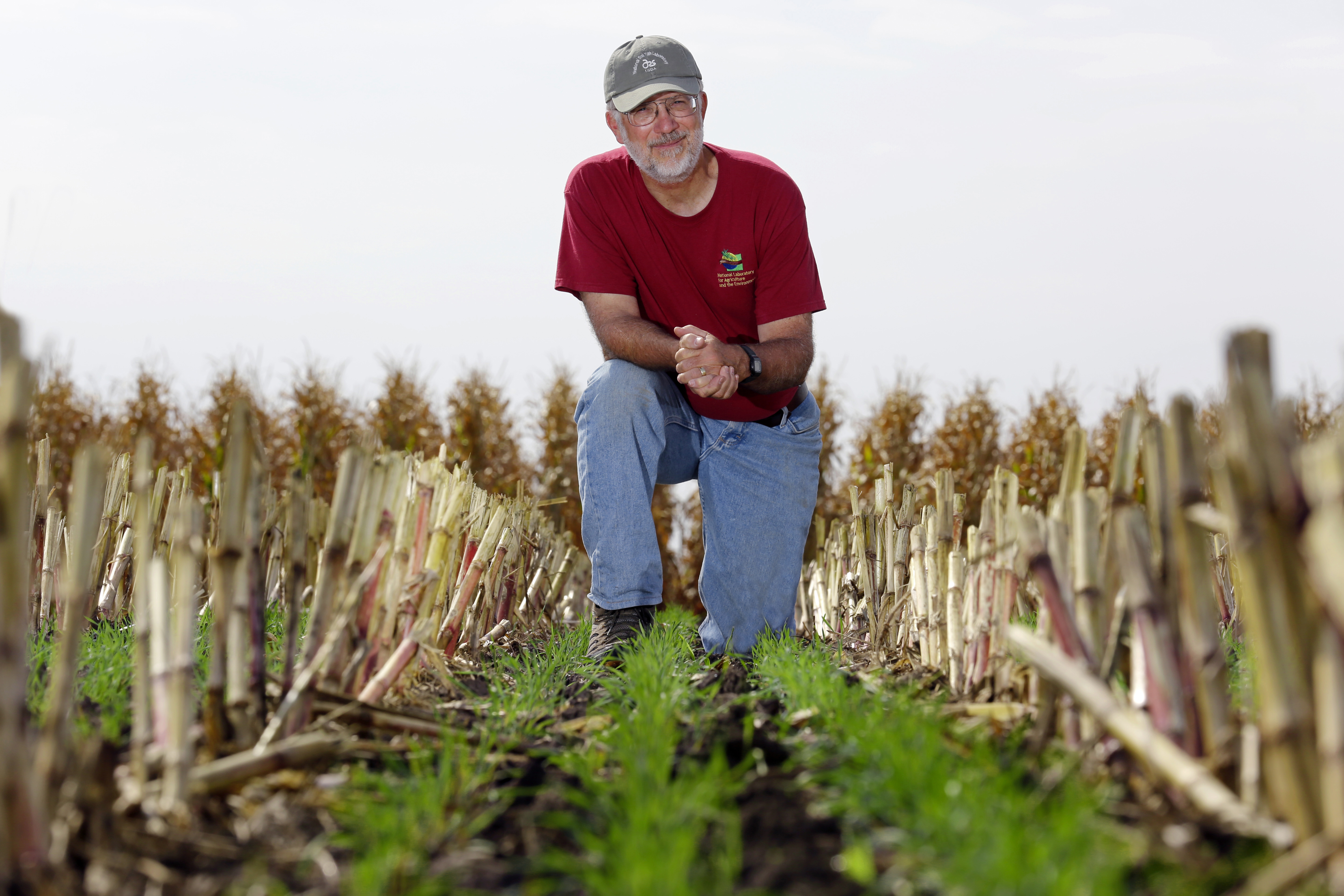
Q&A on Cover Crops
Tom Kaspar (’76 biology, MS ’79 crop production and physiology, ’82 PhD), plant physiologist at the USDA-ARS National Laboratory for Agriculture and the Environment located on the Iowa State University campus, has worked on cover crop projects since the early 1990s. He’s worked with faculty in agronomy, agriculture and biosystems engineering, plant pathology and microbiology and horticulture.
His first research projects investigated cover crops as one way to keep soil in place following soybean harvest to comply with the provisions of the Natural Resources Conservation Service’s Highly Erodible Land Conservation program. Today, cover crops are being used as a way to recycle nutrients and keep them out of streams and rivers to comply with targets set by the Iowa Nutrient Reduction Strategy. He answers a few common questions about cover cropping in Iowa.
How effective at reducing nitrates have cover crops been?
Field research over the last 12 years has shown that when cover crops grow well they can reduce the nitrate lost in tile drainage with corn and soybean production by an average of 55 percent. That kind of reduction in the nitrate reaching surface waters from cropland would really help improve Iowa’s water quality. Unfortunately, only about 1.5 percent of the state’s farmland, or 380,000 acres, were in cover crops based on the 2012 ag census. So we have a long way to go to reach to full potential of cover crops to improve water quality.
What are some other findings from the research?
Nitrate losses in drainage don’t differ much between corn and soybean years, even though soybeans aren’t fertilized. Some of the nitrate in drainage water comes from soil mineralization. Nitrogen management alone won’t solve nitrate losses in drainage because of the five to seven months each year without living plants to take up water and nitrate.
What are some of the challenges producers face when considering cover crops?
Cover crops don’t provide short-term economic returns, seeding them in the fall is one more operation during the busy harvest season and terminating them in the spring can delay planting. Cover crops are a long-term investment in soil health and there is definitely a learning curve, but growing plants is what farmers have done all their lives. A growing number of innovative Iowa farmers have already adapted cover crops to their farms.
How can producers overcome these challenges?
Before jumping in, visit field days, like those sponsored by Iowa Learning Farms and Iowa State University Extension and Outreach, to learn from farmers and researchers. Keep it simple and start small. Use a cover crop that someone in your area has successfully used rather than something completely new. Consider using cereal rye, the most winter hardy of all the cover crops, which can be planted late and still survives the winter. A lot of other cover crop species are not winter hardy and need to be aerial-seeded before harvest to grow enough to provide any benefits. Pay extra attention when planting into cover crops. Make sure they are dead and that your planter is maintaining good seed depth and closing the seed furrow.



